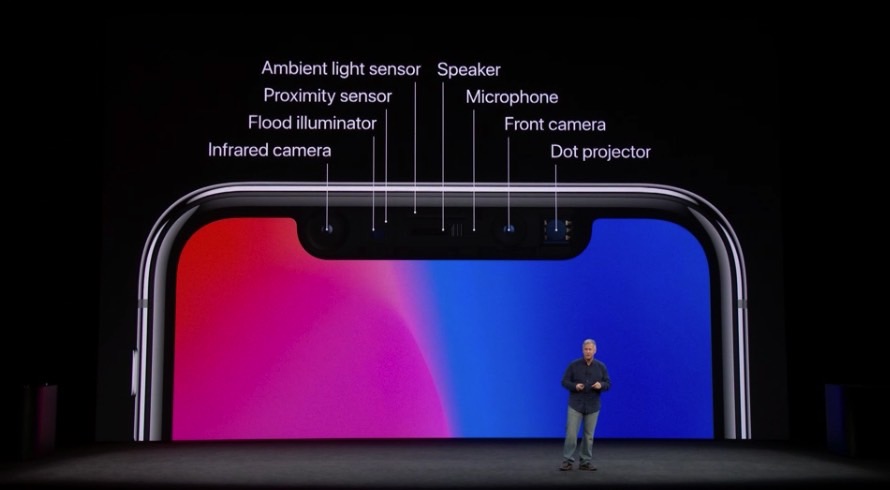The iPhone X has two signature features: the all-screen design and the TrueDepth camera that powers the phone’s Face ID facial recognition system. Face ID is supposed to be more secure than any other facial recognition system out there, and it brings over to iOS a new way of interacting with the device for unlocks and transaction authentication.
We already know everything there is to know about Face ID functionality and security. Although everything the Face ID system does is invisible to the naked eye, a new video actually lets us see the magic happen.
The iPhone X’s notch houses a complex array of cameras and sensors that make Face ID possible, and Apple calls it the TrueDepth camera. It’s the advanced, depth-sensing facial recognition system Apple built for the iPhone, miniaturizing Kinect technology to fit inside a phone.
One of the components inside the TrueDepth array is a dot projector that shoots 30,000 infrared dots at your face to create a 3D depth map of it. Reddit user visss9 observed the dot projector in action in a hands-in iPhone X video from TechCrunch. Check out the following clip, recorded after Apple’s iPhone event in mid-February, and look for a flicker on top of the phone, near the right corner:
That’s the dot projector operates on the infrared wavelength, which is invisible to the human eye but visible to cameras. The user also compiled a list of everything that happens with the iPhone when dot projector activity is observed:
First instance: 0:10 – 0:18 What’s happening: Animojis Second instance: 0:28 – 0:35 What’s happening: Portrait Mode on front camera being used Third instance: 0:38 – 0:41 What’s happening: Face ID verification. The infrared camera on the left side of the notch also blinks momentarily. Fourth instance: 0:42 – 0:45 What’s happening: Animojis Fifth instance: 0:58 – 1:02 What’s happening: I have no idea, but both the infrared camera and the dot projector blink right before the screen switches off.
The TrueDepth camera is also the reason why the iPhone X won’t launch until early November, and why Apple has been dealing with production issues. A recent report from The Wall Street Journal identified manufacturing issues with the dot projector, calling it the main iPhone X component that’s keeping production behind.








